March 2020: An Empty Manhattan
Driving to New York City at the start of COVID
Five years ago tomorrow, on March 21, 2020, I drove to New York City. It’s a trip I’ve made countless times over the past 15 years by plane, train, automobile, and bus, so it should have been old hat by then.
But it wasn’t. Like the rest of the country, New York City was shutting down due to COVID-19.
The trip was to pick up our son, Ben, and his partner, Gaby. Trains were impossible to get, and they had waited until the last possible second to evacuate. Restaurants, bars, and nonessential businesses were closed. Outdoor activities were limited to getting groceries, medicine and exercising. A stay-at-home order was taking full effect that evening.
In Alexandria, even though our downsized home was crowded, everyone would be in safer and more welcoming confines. So on that Saturday morning, a bright crisp day that normally would have seen crowds jamming Central Park and Times Square, I drove toward a city that felt post-apocalyptic.
Earlier Times
I will always have a special place in my heart for New York City, a place I did not visit until I was in my mid 30s.
Growing up in the 1970s and 1980s in a small-ish town on the Texas Gulf Coast, New York was a fantasy land, albeit one filled with grime, crime, and danger, according to my parents. Products of small to small-ish towns, they were risk averse to a fault, and my dad’s illness prevented us from going anywhere on an airplane from a financial standpoint, let alone a “dangerous” city.
One aspect of my teenage/early college rebellion — with a few exceptions, I never really rebelled — was to read and learn everything I could about New York and the sights/sounds/scene of the Lower East Side. I became and remain fascinated by the world of Andy Warhol, Lou Reed and the Velvet Underground, and the music that blasted nightly from CBGB and Max’s Kansas City.
As a journalist working for a string of community dailies, I struggled to pay rent, much less travel. In the era of AIDS and crack, big cities were not destinations, or so I thought in my pre-FOMO/YOLO days. Even though I grew up near and had lived in Houston — itself the fourth largest city in the country — New York still seemed far away.
In 1999, while working and living in tiny Reidsville, N.C., Jill and I ventured to New York to see “Annie Get Your Gun,” the Bernadette Peters/Tom Wopat revival playing at the Marriott Marquis. We were in the throes of early parenthood, having just had three kids in one year, and Jill had played the title role in a community theater production with Ben and Emma (then unknowingly) in utero.
While Jill’s mom kept the kids, we did some tourist things and stayed almost anywhere but inside. Our hotel room — not the Marquis, which was beyond our budget — barely accommodated the double bed. While the trip was enjoyable, Times Square was overwhelming. I did not fully grasp that the rest of New York was not the Disneyfied theme park that we stayed in.
After moving to Northern Virginia in 2001, my job started taking me to New York at least annually. We took the kids up on the train several times when they were younger and gradually became more comfortable in the city, although we rarely ventured outside Midtown.
In the fall of 2009, our relationship with New York changed for good.
Plays and Photos
That year, when our kids were 16, 12, 11, and 11, Ben was picked to understudy Little Boy in the Broadway revival of “Ragtime.” For a year, Jill and I traded off every three to four days, with one of us staying with Ben in the city while the other took care of Emma and Kate in Northern Virginia.
It was during that chaotic year that I finally got to see and experience New York, warts and all. And it also started my journey into photography, another reason I always will love the city.
Today, few things make me happier than walking around different cities with my camera, capturing the random nature, architecture, people, and things that make up our day-to-day lives. I owe that to our time in New York.
On March 21, 2020, however, there was very little walking. I got out of the car only four times during the 500-mile roundtrip — twice for gas, once for food, and once to load Ben and Gaby’s things before driving back to Virginia.
Over the next several weeks, while we were stuck in quarantine, I started walking through Alexandria. Instead of my Canon, I carried my iPhone.
The phone was similar in quality to the camera I started out with in 2009. It had, for lack of a better term, limits. I took those limits and turned them upside down, accepting what I couldn’t do with the phone as much as what I could. Over the next year, it proved to be an appealing artistic challenge during an uncertain and unstable time.
In early 2024, I started going through those images — more than 2,000 in all, captured during almost 4,000 miles of walking in four cities — as well as my written diary from the pandemic. Five years after that strange, surreal day, my first book is out and now available.
What a strange world we live in.
Keep Your Distance: Walking Through the First Year of COVID is available for $40 plus $5.95 for shipping and handling. You can order it by visiting this link.



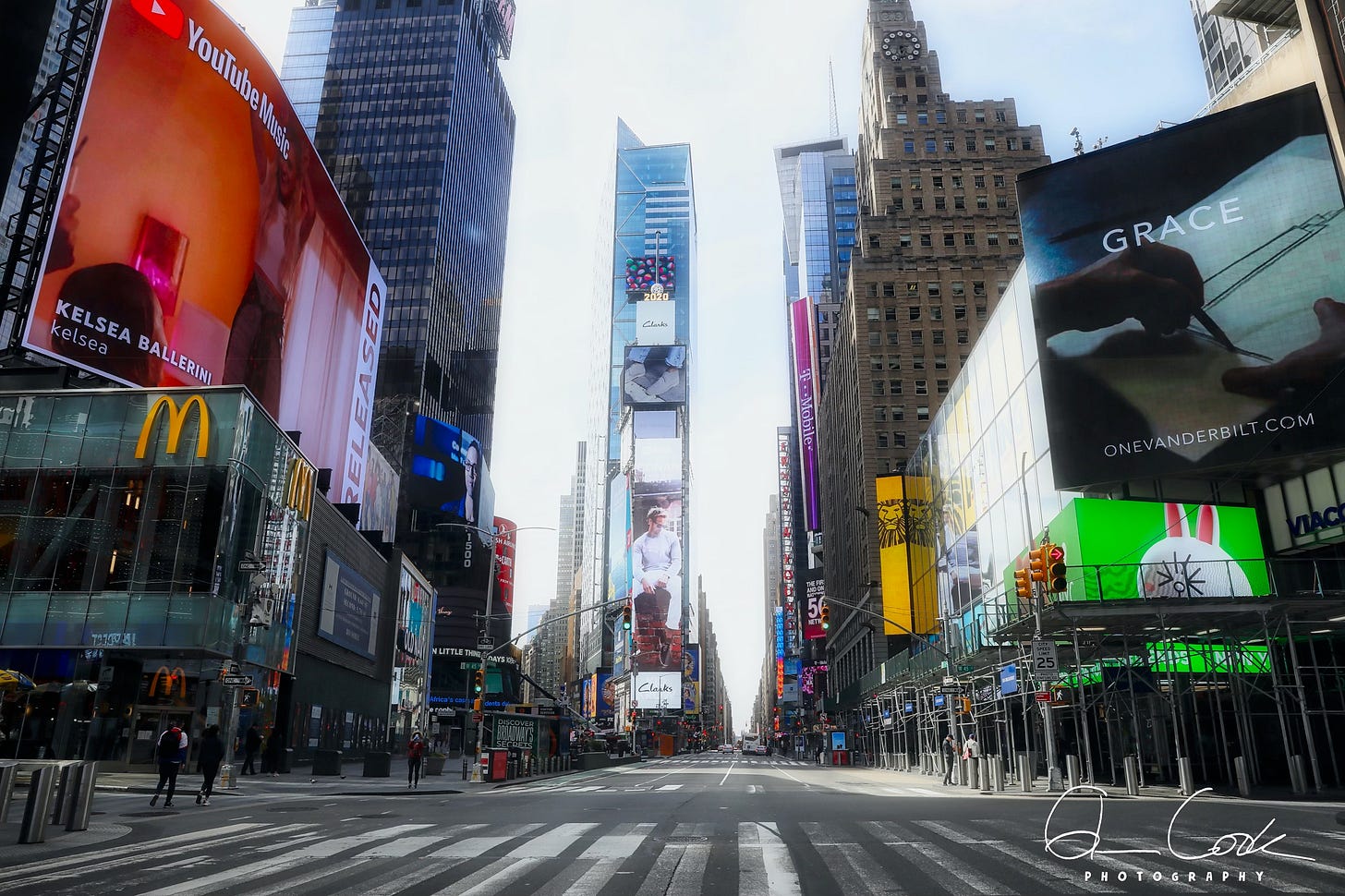
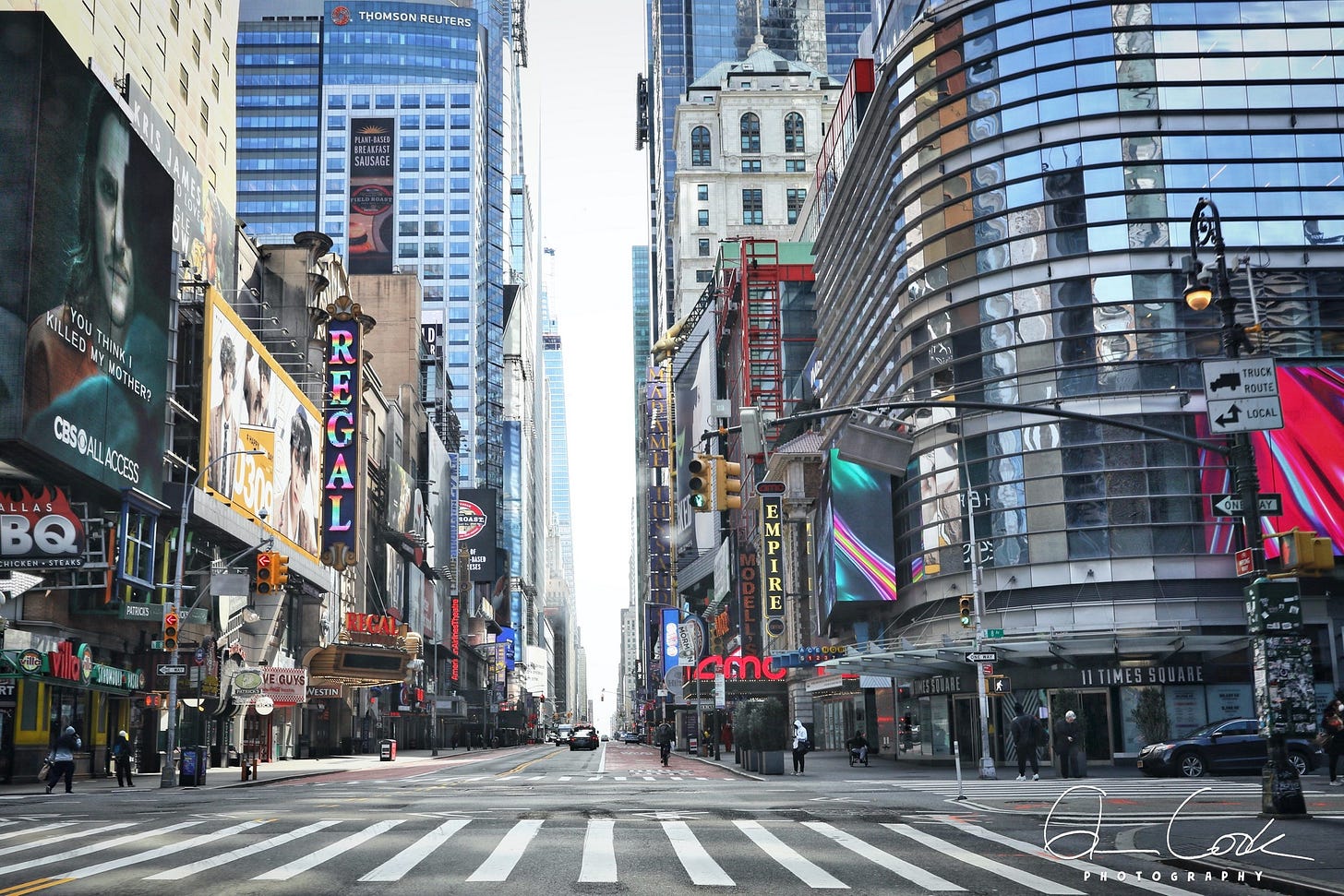
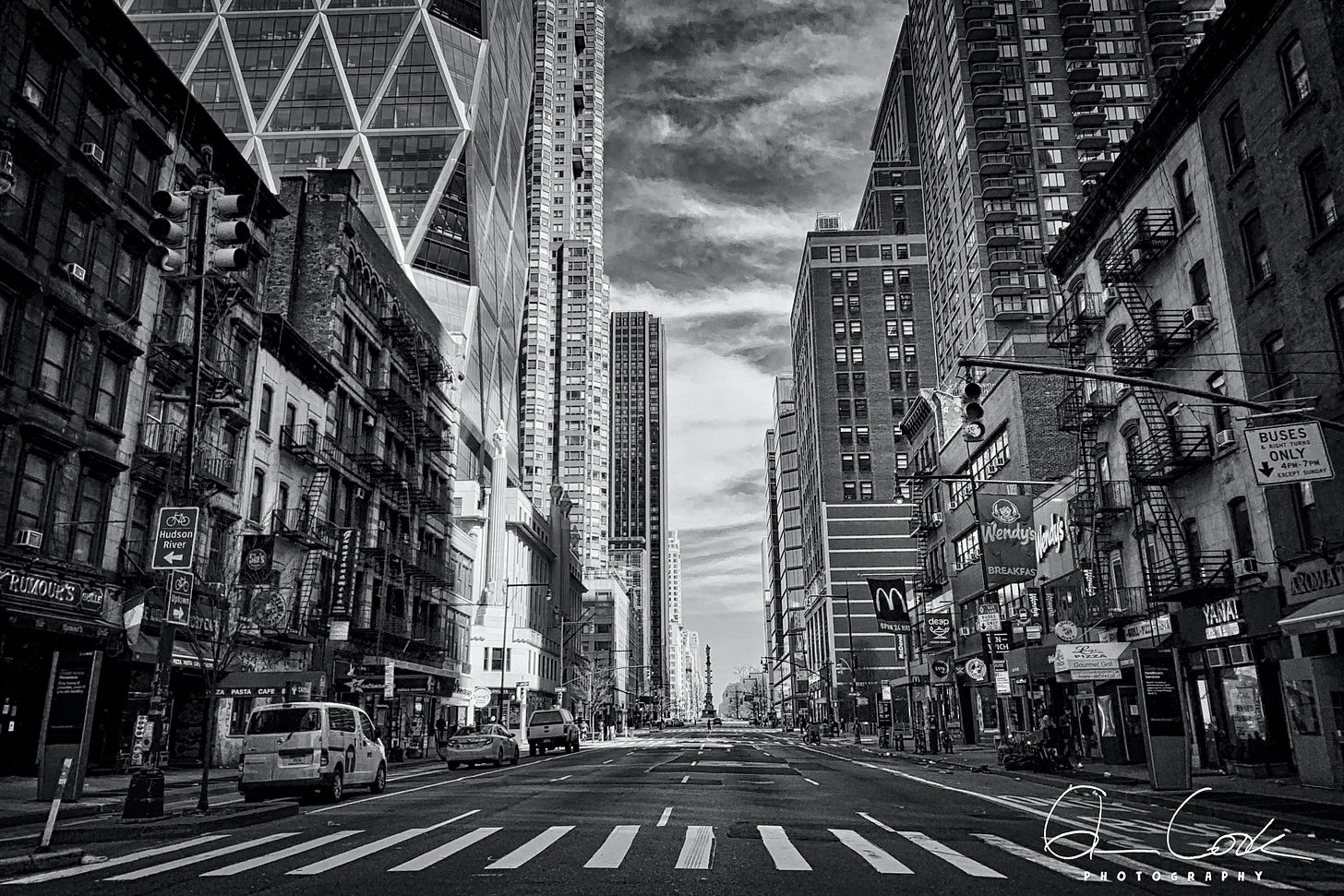


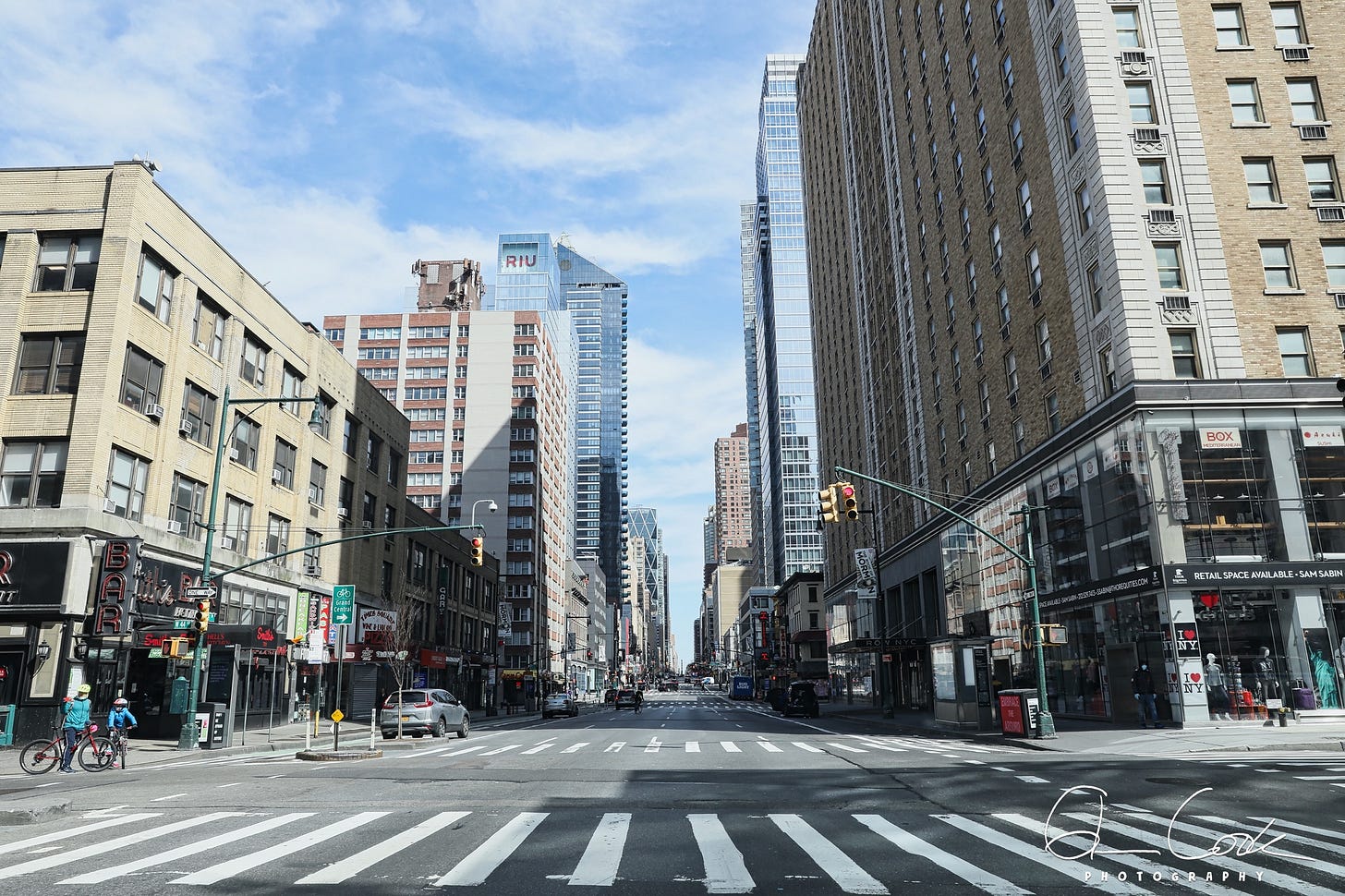
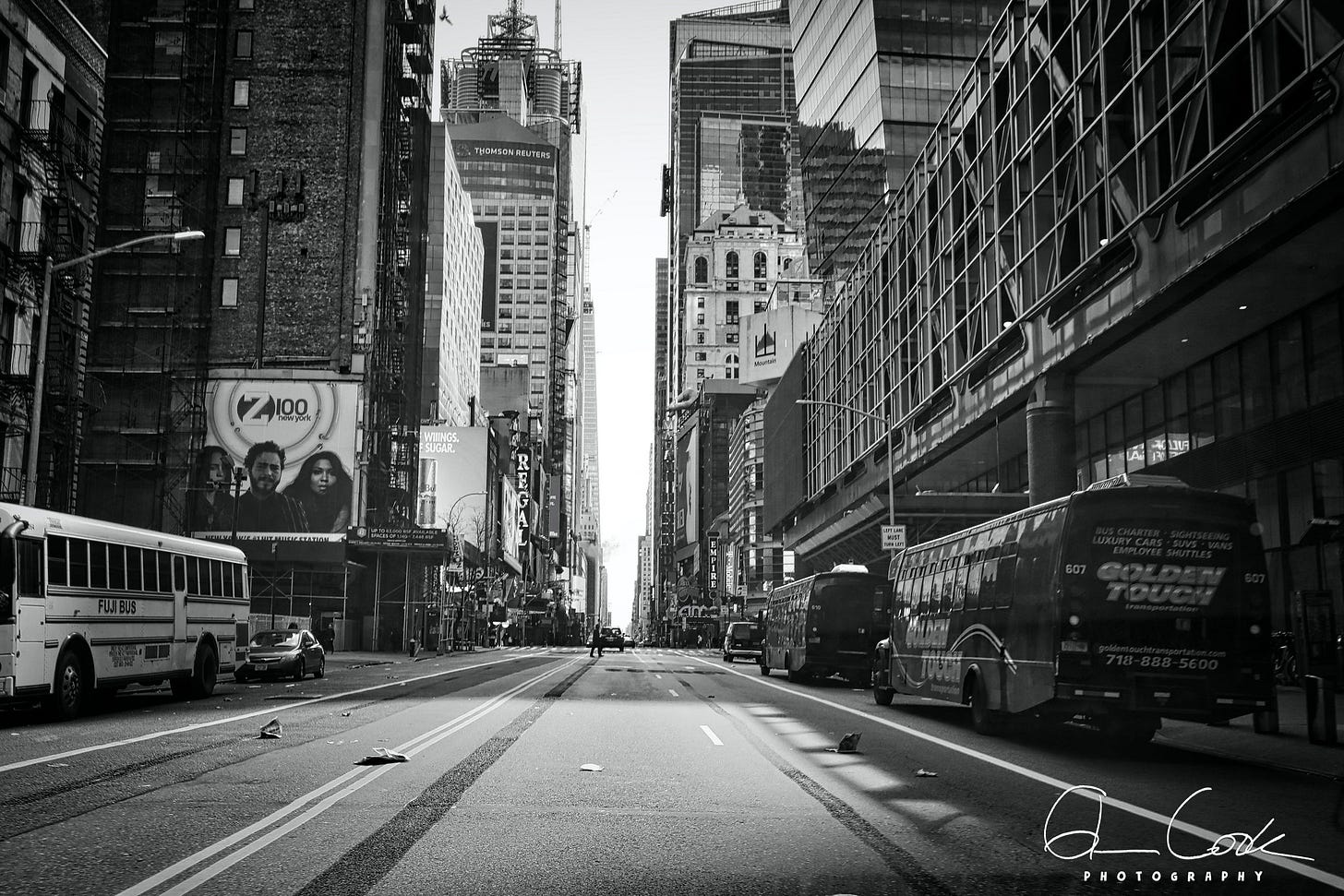
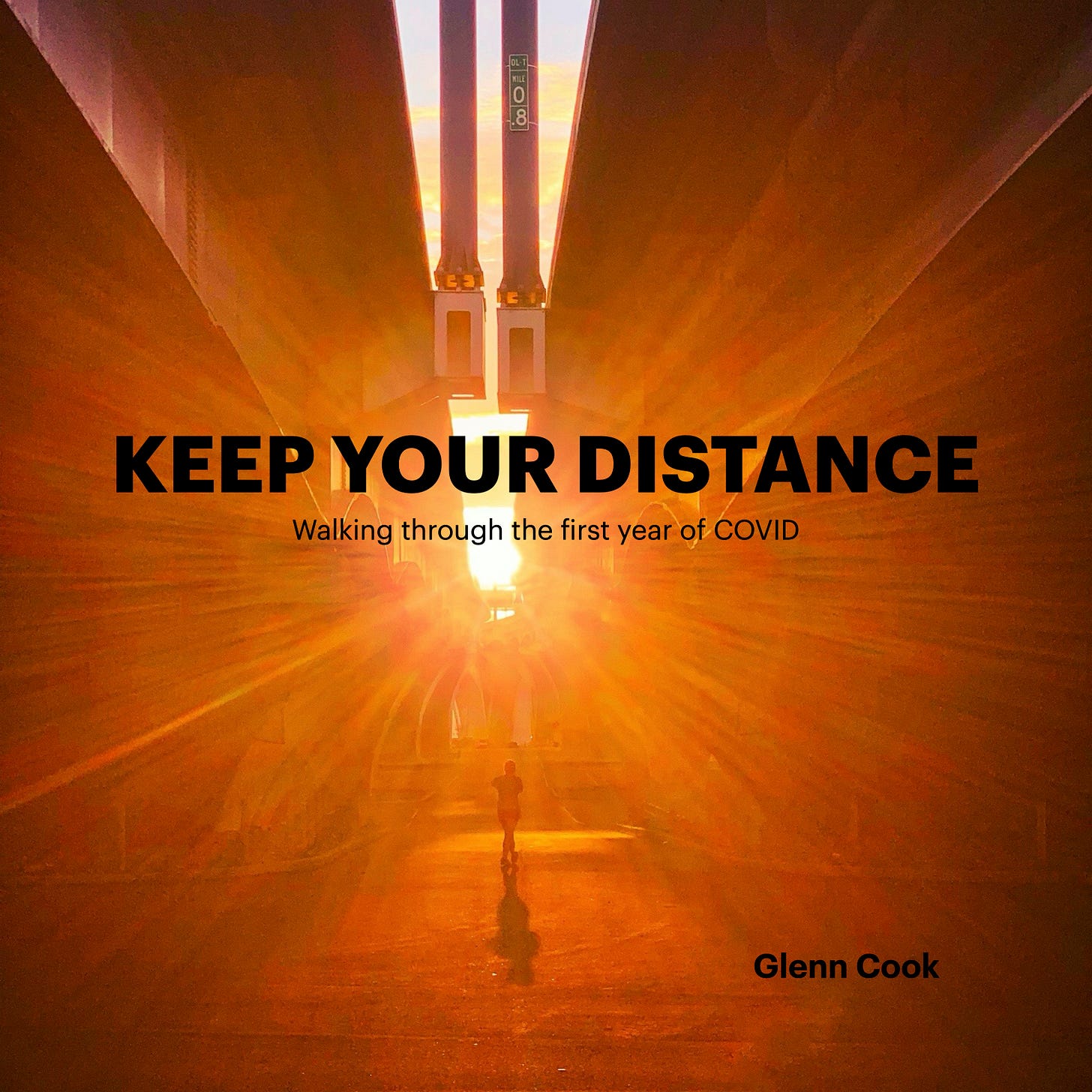
That was the only thing I liked about the pandemic was that everything was closed and there weren’t many people out. Of course that meant people lost their jobs, etc. myself included, and it took a long time to get Unemployment . I finally did though. If we could live through that we could live through the current climate of America.
That is soooo eerie. I have not seen NY photographs from COVID. Thank you.